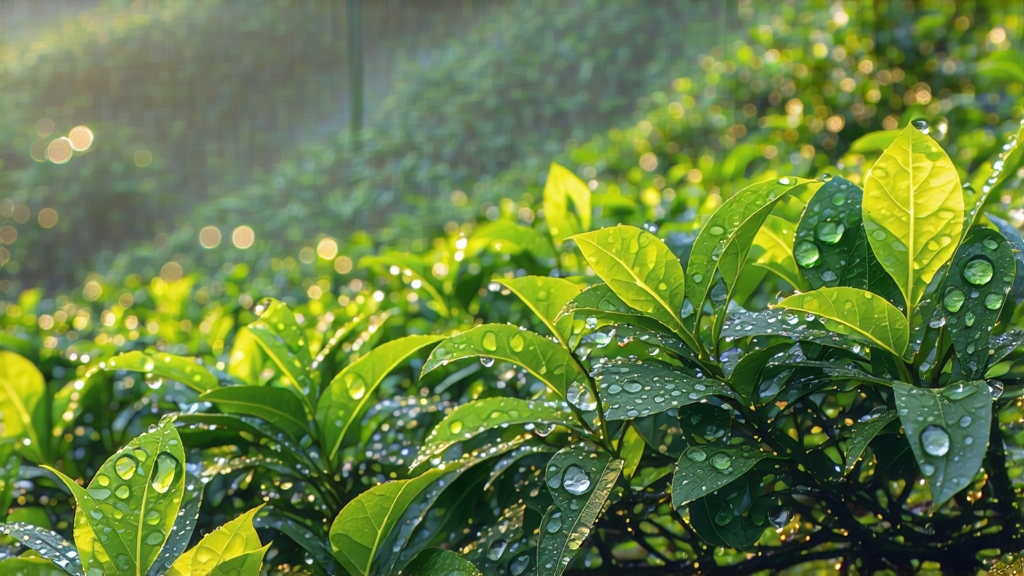
Alishan High-Mountain Oolong is not merely a tea; it is a liquid map of Taiwan’s central mountain range, a fragrant diary written in fog, cedar and orchid. Grown between 1,000 and 1,400 metres on the forested slopes of Alishan, this cultivar captures the island’s maritime monsoon climate and mineral-rich, erosion-fed soils. The result is a jade-coloured leaf that unfurls into a champagne-gold liquor prized for a “high-mountain qi” (gaoshan yun) that connoisseurs describe as alpine coolness married to creamy sweetness.
History
Oolong reached Taiwan from Fujian in the mid-19th century, but Alishan’s story begins in 1981 when the Taiwan Tea Research and Extension Station released the TTES #12 “Jin Xuan” hybrid. Farmers soon discovered that the old Qing Xin (Green Heart) cultivar, planted at altitude, yielded a more refined fragrance. By the late 1980s, government road-building opened the mist-laden Alishan ridge to tea gardens. Within a decade, Alishan High-Mountain Oolong eclipsed lower-elevation teas, its name becoming shorthand for Taiwanese luxury leaf.
Terroir & Harvest
Alishan’s diurnal swing can exceed 15 °C. Daytime sun thickens amino acids, while night frost slows oxidation, concentrating floral volatiles. Indigenous red cypress and bamboo filter morning fog into a slow-release moisture bath. Two flushes matter most: spring (late March to early May) and winter (mid-October to late November). Spring tea is plush and lilac-fragrant; winter tea is leaner, with a white-pepper finish. Only the apical two leaves and a bud are hand-plucked before 10 a.m., when dew still guards cell turgor.
Crafting the Leaf
- Withering: Baskets of leaves are sun-withered for 20–30 minutes on bamboo trays, then moved indoors for 4–6 hours of cool-air withering. The goal is 8–10 % moisture loss and the first grassy-to-fruit conversion.
- Bruising & Oxidation: In a rhythm unchanged for 150 years, artisans tumble leaves in waist-high bamboo drums for 3–5 minutes, rest 30, repeat 4–6 cycles. Edge bruising triggers partial oxidation (15–25 %), the sweet spot between green freshness and black body.
- Fixation: A 280 °C wok toss for 3–5 minutes halts oxidation, locking in a jade-green centre ringed with russet.
- Rolling: The hot leaves are wrapped in cotton cloth and rolled under mechanical pressure into tight hemispheres. This ruptures cells, coaxing sap to the surface for future infusions.
- Drying & Roasting: Low-temperature dryers reduce moisture to 3 %. Many Alishan teas are given a “light charcoal” finish: 3–4 hours over embers of longan fruit wood at 80 °C, adding a whisper of smoked honey without masking alpine florals.
Grades & Styles
- Qing Xin Alishan: The classic, pure cultivar, lightly oxidised, unroasted. Aroma: orchid, sweet pea.
- Charcoal Alishan: Medium roast (30–40 %), deeper body, notes of toasted almond and warm milk.
- Honey Alishan: Leaf-hopper-bitten version, naturally honeyed, reminiscent of Eastern Beauty but with gaoshan lift.
- Vintage Alishan: Carefully re-roasted every two years, developing prune, sandalwood and camphor over a decade.
Water & Ware
Water is the silent ingredient. Aim for 40–60 ppm TDS, pH 7. Mountain spring water is ideal; reverse-osmosis water re-mineralised with a pinch of bamboo salt works in cities. For ware, choose a 100 ml gaiwan or zhuni clay teapot. Zhuni’s high iron content tightens the body, amplifying creamy texture.
Gongfu Brewing Protocol
- Pre-heat: Rinse vessel with 95 °C water; discard.
- Dosage: 6 g for 100 ml (1:16 ratio).
- Awakening